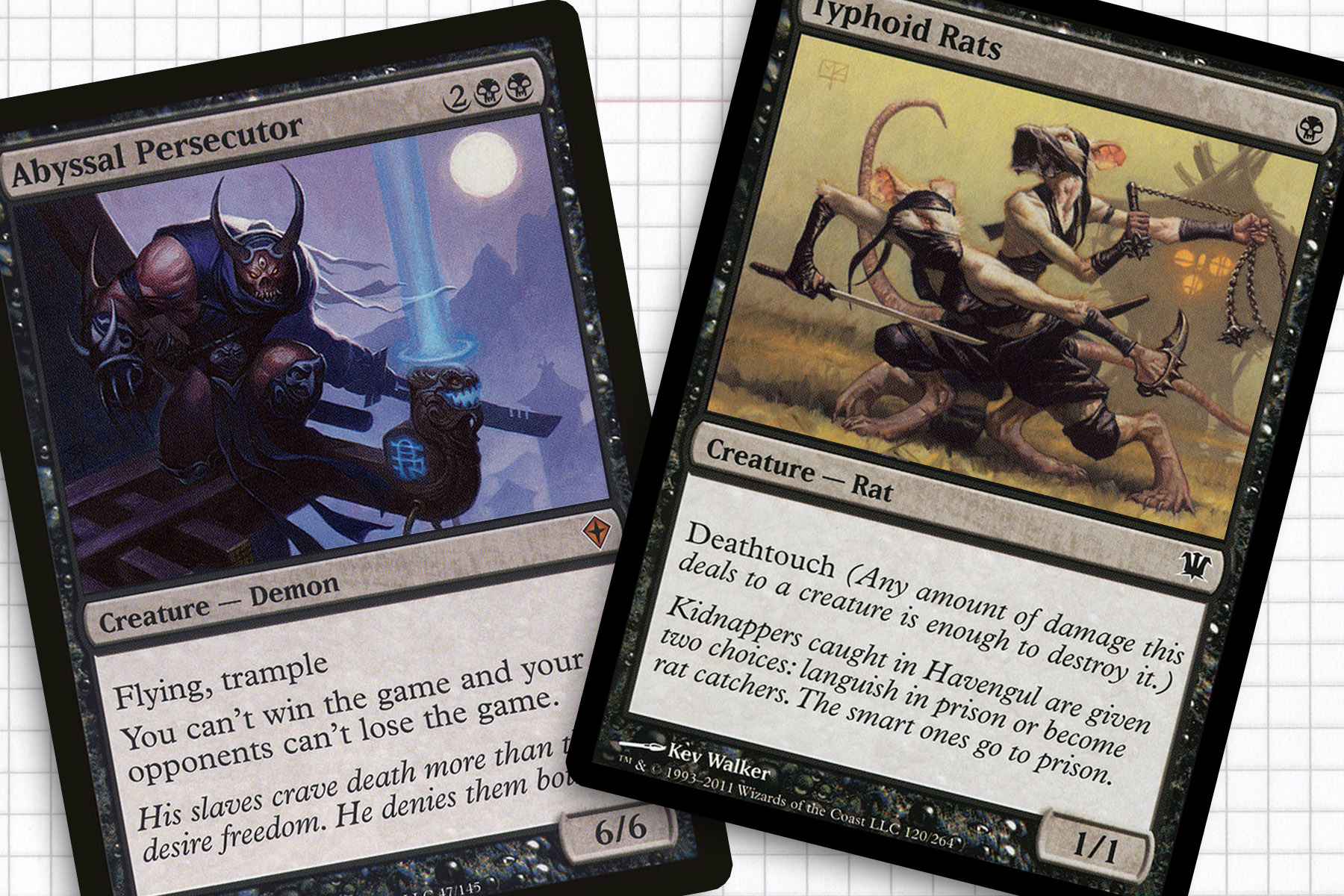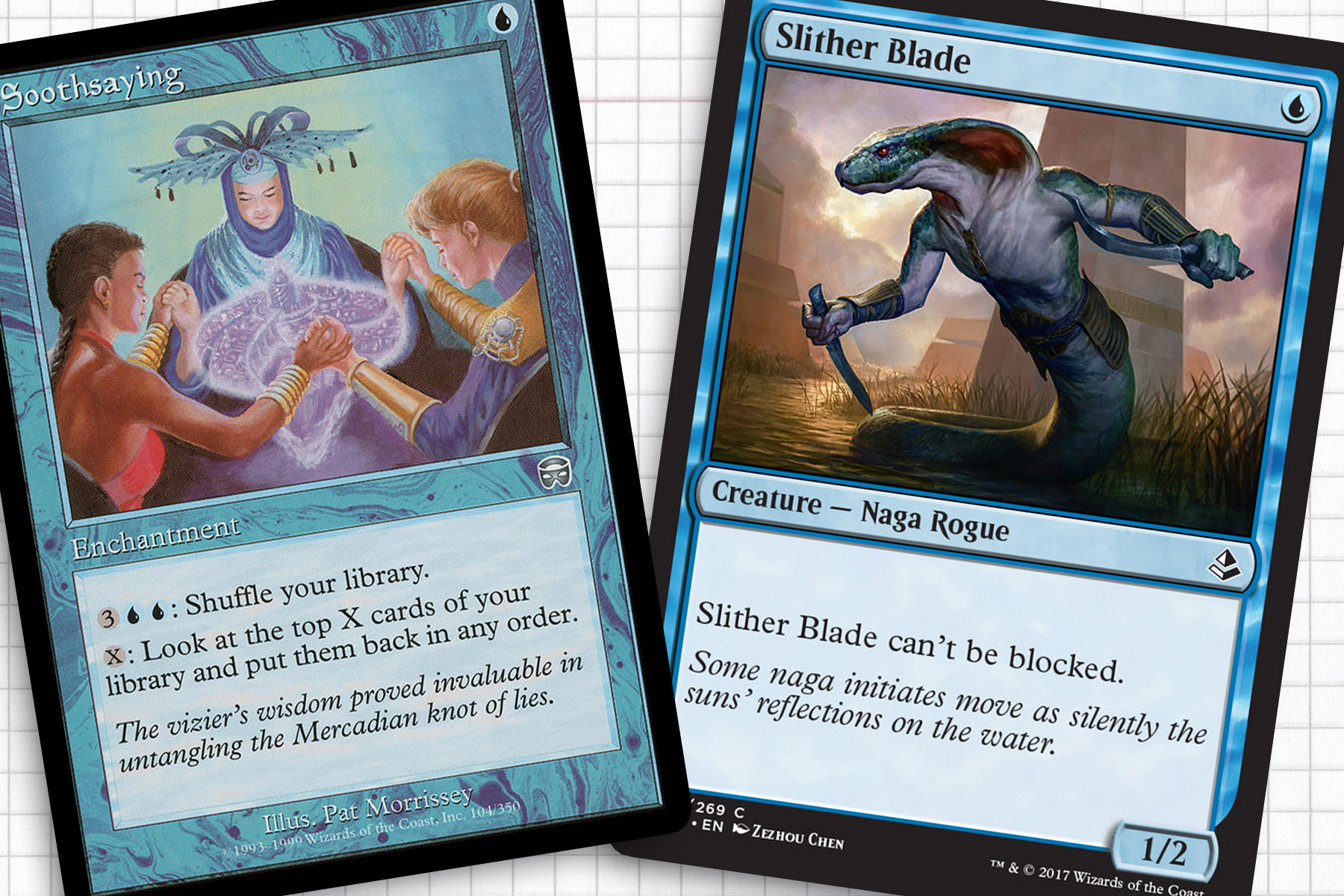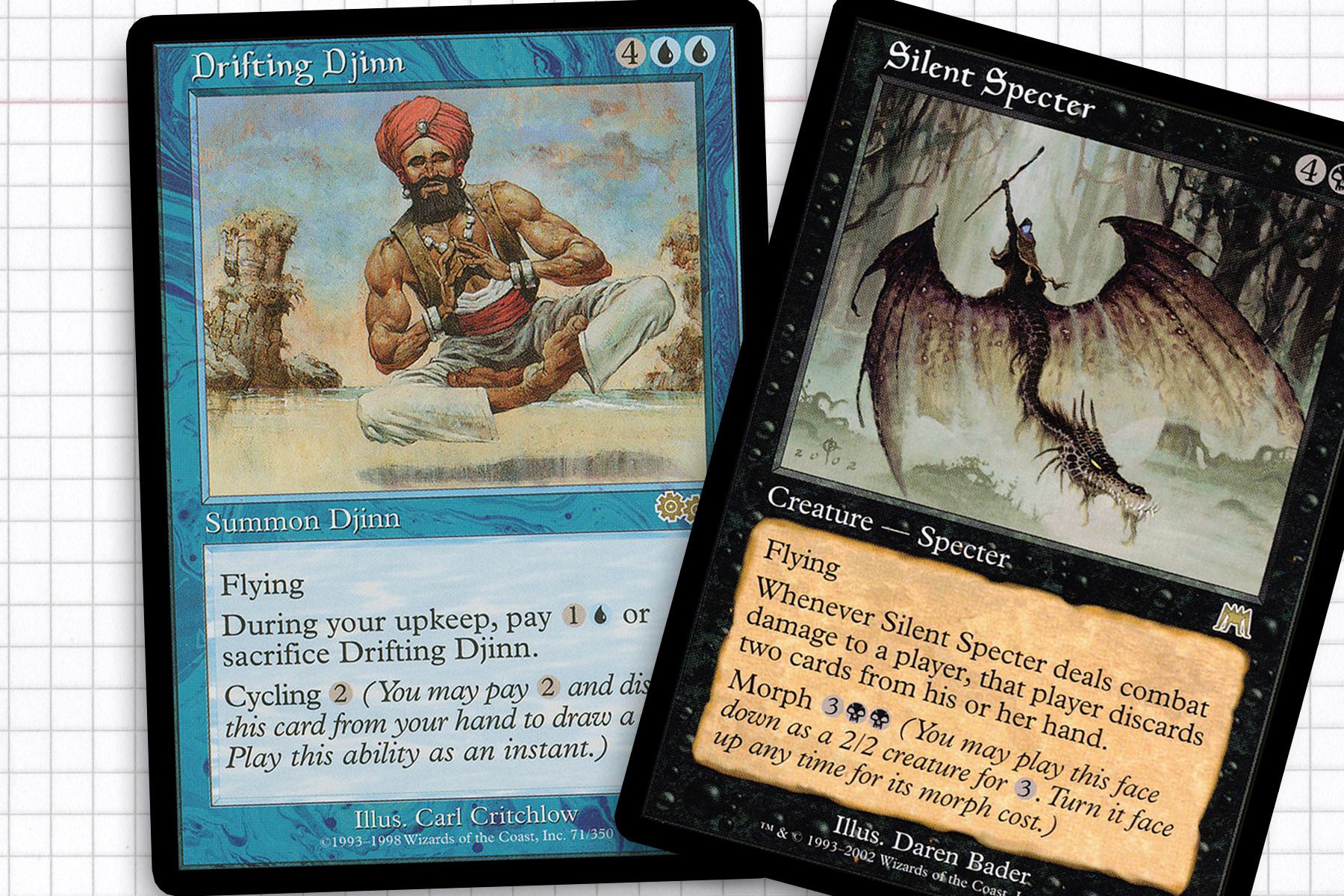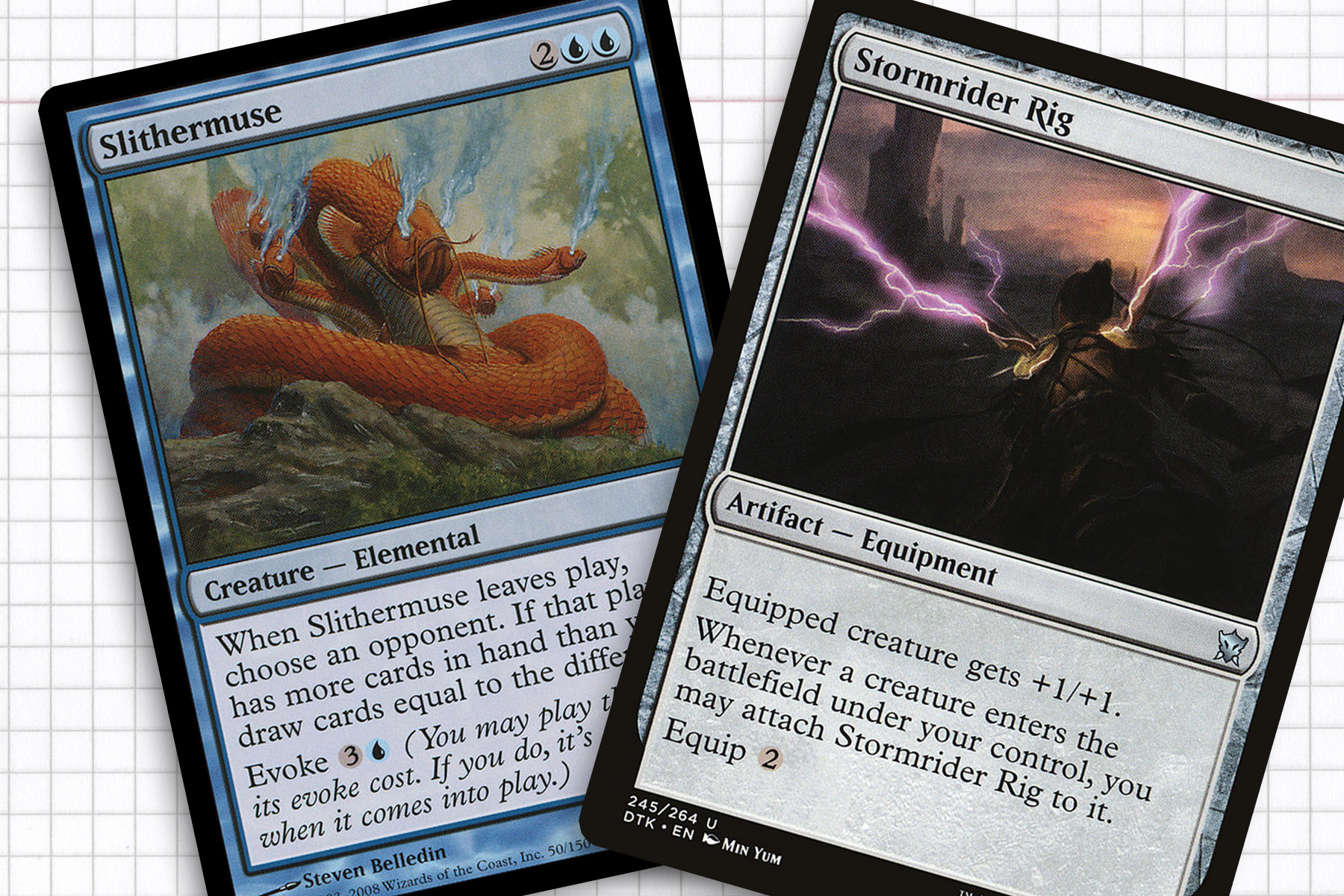In the early parts of my Commander career, I built many more decks than I do now. I would play just about every Monday night and would rush home with a mental list of cards I wanted to replace with cards I had just been introduced with or that I had been looking to swap in. There’d be half a dozen stacks of cards sitting on a shelf in my closet, just waiting to be polished into a new deck. I was a fiend. What I miss the most about those days was that I never really knew what was going to be a runaway hit and which deck was going to be dismantled within the month. Since then, my income has become a little less disposable, my time to play is far more sporadic, and my drive to find new decks has lessened considerably. But that doesn’t mean I don’t like a challenge.
Commander 2018 has brought a lot of promise to the new landscape of the format. I honestly don’t expect this year’s entry to have the same effect as last year’s tribal theme or the experience counter kerfuffle of 2015; but if there is one general who might inspire the most attempts at finding a solid deck, I would wager Yuriko, the Tiger’s Shadow is the top candidate. The journey to a Ninja commander goes as far back in the format’s history as I can remember, since it was on the short list of tribal generals many had been looking to see printed for quite some time (Naya Samurai, please) with some unconventional choices like Vela the Night Clad or Sygg, River Cutthroat being used in place of a functioning thematic choice.
Sadly, even with a general granted a special form of ninjutsu, the question still lingered, “are ninjas possible in Commander?” Not being afraid of failure and excited by the chance to try, this week we’re going to try to crack Ninjas in Commander. To me, the classic idea of a ninja involves misdirection, deception, and illusion. While the later has a different meaning in Magic, I would like to capture bits and pieces of all three to try to match the spirit of ninja flavorfully to compensate for a lack of creatures bearing the creature type.

Go Ninja, Go.
Coming out of Betrayers of Kamigawa, the dozen or so ninja were one of the most evocative parts of the set, immensely flavorful and desired by the player base. It’s strange that they have only appeared on three other black border cards since Betrayers: Silent-Blade Oni, Sakashima’s Student, and Yuriko. Ninjitsu, the mechanic that has defined them, is such a flavor win, playing on the “saboteur” effects common in blue and black, while also being a flavorful variant of Morph is some respects. The first time I saw ninjitsu, I will admit I didn’t understand what I was looking at and how powerful the ability was—only the flavor jumped out at me immediately. As time has gone on, the unique band of creatures has been a fun way to replay creatures with enter the battlefield effects, get an Abyssal Persecutor off the field when I was ready to win, destroy utility creatures with Throat Slitter, and exploit people’s fears of Typhoid Rats.
The list of great ninja comes down to Ink-Eyes, Servant of Oni, Ninja of the Deep Hours, Okiba-Gang Shinobi, and Throat Slitter, with Silent-Blade Oni and Walker of Secret Ways being good in combination with one another. To overcome the short list of playable ninja, the common answer has been to introduce some changelings to the deck. Blue and black lack a Mirror Entity, Chameleon Colossus or Taurean Mauler to make the additions really attractive, leaving “cheats” like Mistform Ultimus, Conspiracy, and last year’s Kindred Discovery as the final pieces of the puzzle that enabling the tribe.

Sneaking Past Defense
With a limited pool of creatures that can actually sneak into play through ninjitsu, the next thing that needs to be addressed is how we’re going to reliably get them into play. Luckily, blue and black are both colors that support tricky-to-block creatures, the drawback being that, like most of the ninjas, these unblockable creatures come with rather low power. To me, Yuriko is a lot like Skullbriar, the Walking Grave in that we’re looking to have her in play and attacking on turn two. This means that our one-drop attackers are the most important turn one plays.
With how important having both black and blue mana available and an unblocked creature attacking on turn two is, the wise choice is to overfill the can’t-be-blocked suite with more card slots than usual. Some suggestions: Gudul Lurker, Mist-Cloaked Herald, Signal Pest, Slither Blade, Tormented Soul, Triton Shorestalker, Merfolk Spy, Plague Beetle, and Grayscale Gharial.
The hope would be that you won’t have to mulligan too hard to get a equivalent hand with a one-mana creature, Swamp, and Island when you have nine one-drops. From there the play pattern of this deck’s first two turns are pretty by the book, with following turns open to top-deck manipulation in the form of Insidious Dreams, Index, or Soothsaying to start setting up high cost reveals to drain opponents.
The last piece of “secret tech” I would use came to me as I was catching up on Top 10 episodes of Magic Mics this weekend: Hot Soup. Not as much needed in the early turns, but certainly helpful for sneaking a few ninjas out if we haven’t yet found Higure, the Still Wind. Hot Soup enables us to make our creatures unable to be blocked with a downside that is pretty situational. It’s also not out of the question to employ Artful Dodge, Slip Through Space, and Distortion Strike as ways to insure Yuriko’s arrival early or later to get larger creatures through.

Maximizing Top Decks
The paradox now is that once we’re connecting with our ninja troops for damage, we’re going to be gaining some card draw and draining our opponents by the converted mana cost of the cards being put in our hand. That means that most logical thing is to have bigger spells in our hand. I understand this tension and see why the natural reflex is to go big on mana cost, but I wonder if that instinct is win-more. If we’re drawing even two extra cards per turn and draining our opponents for an extra six damage a piece, I could be okay with that.
My first instinct for the higher-mana spells that might get trapped in our hand after draining opponents was to use them as a resource to dig deeper into our deck with Compulsion. Obviously it is impractical to rely on that one card, but it pushed me to thinking about an angle I haven’t seen being explored that should be considered: cycling and morph. Both of these keywords allow us to have higher-cost spells in our deck that will not always cost us huge chunks of mana to cast. The added layer is that because they are another unknown in the deck, the question for our opponents becomes if the 2/2 is going to unmorph into a threat or if it is a red herring for a ninja. I like Maelstrom Djinn, Silent Specter, and Glacial Stalker as expensive cards to reveal and drain our opponents. But if I could, I would be trying to get Ebonblade Reaper into play under the guise of being a different morph card.
As for cycling, Absorb Vis was the first card to jump out to me. It’s got a higher converted mana cost and it can be discarded away at a low cost for value. Drifting Djinn fills a similar role, being a reasonably high-cost card for Yuriko’s trigger, while being either a creature or draw spell once we have it in our hand. Finally, Striped Riverwinder has proven to be a good card on its own in many decks I have played, as a hexproof creature or a card-draw spell depending on the situation.

There and Gone
The next effect I would look to harness is Evoke, simply because it is a method for getting creatures into play for less then their mana costs, which tend to be on the higher side. Returning a Mulldrifter, Shriekmaw, or Aethersnipe to our hand to recast later will be the method most people will find the most appealing,. In the context of Slithermuse and Nevermaker, however, we don’t mind using them as methods of Ninjutsu because they gain value when they leave the battlefield.
The last exploit for this deck is shadow, which is no surprise to my most dedicated readers. Coming to us out of the Tempest block, shadow is about as hard to block as you’re going to get short of commiting to horsemanship. Flavorfully they are creatures that exist slightly out of phase with the rest of the world and thus cannot block or be block by normal creatures. Just about any of the spells with or granting shadow are going to be viable. Dauthi Horror, Dauthi Cutthroat, Looter il-Kor, and Thalakos Sentry might be the most useful due to their inexpensive mana costs. With that, the only remaining pieces of the deck I would suggest are Sai of the Shinobi, Stormrider Rig, and Ronin Warclub for their special ability to play well with creatures being swapped in and out of play—the perfect niche equipment for this deck.
After we’ve set up a battlefield where no creature can be trusted to be what our opponents might take them to be, winning might not come quickly. But if we are employing permanent-based creature enhancement like Whip of Erebos and Coastal Piracy, I think we can come away with interesting deck that just might sneak in some wins. With ninja, the name of the game will always be deception and the general sense that you don’t always understand what exactly it was that killed you. I would really like to see a return of ninjas en masse, preferably requiring ninjitsu. They are a cool variant on the Rogue creature type with an interesting play pattern, so hopefully Yuriko will show Wizards just how passionate the fans are.

